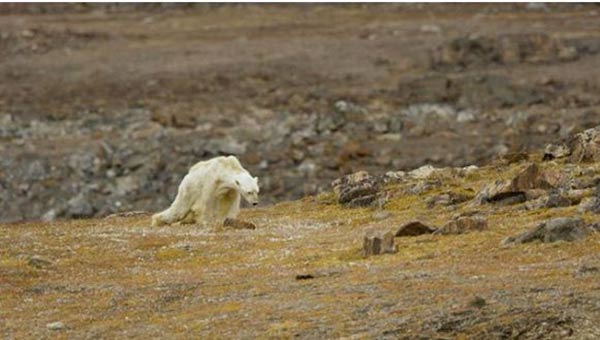¡Desgarrador! Capturan en video la muerte de un oso polar que buscaba alimento
Pese a los dramáticos cambios en la tierra, todavía hay personas que no son conscientes de los estragos del calentamiento global, que afecta considerablemente la vida animal, sobre todo en el polo ártico.
Desde hace años algunos científicos han venido alertando la desaparición de los osos polares. Sin embargo esta realidad fue captada recientemente por el grupo de conservación Sea Legacy, que grabó la muerte de un oso polar hambriento.
ha grabado a un oso polar extremadamente demacrado poco tiempo antes de su muerte.
Las imágenes fueron compartidas por el fotógrafo Paul Nicklen en Instagram. En ellas se ve cómo el oso está buscando infructuosamente comida en botes de basura abandonados en la desértica e inhóspita isla de Baffin, en el noreste de Canadá.
Nicklen ha aseverado que “este gran oso macho no era viejo” y que “indudablemente murió a las pocas horas o días” después de ser filmado en esta condición.
“Así se ve el hambre. Los músculos se atrofian. Sin energía. Es una muerte lenta y dolorosa”, escribió Nicklen describiendo el video.
“A medida que las temperaturas aumentan y el hielo marino se derrite, los osos polares pierden el acceso al alimento básico principal de sus dietas, las focas. Hambrientos y sin energía, se ven obligados a deambular por los asentamientos humanos en busca de cualquier fuente de alimento”, indicó.
“Es una escena que desgarra el corazón y que todavía me atormenta, pero sé que debemos compartir lo hermoso y lo desgarrador si vamos a derribar los muros de la apatía“, ha confesado el fotógrafo.
“La simple verdad es esta: si la Tierra continúa calentándose, perderemos osos y ecosistemas polares enteros”, manifestó.
Nicklen ha resaltado que aún hay soluciones al problema del cambio climático. “Debemos reducir nuestras emisiones de carbono, alimentarnos de forma adecuada, dejar de talar nuestros bosques y comenzar a poner en primer lugar la Tierra, nuestro hogar”, ha subrayado.
